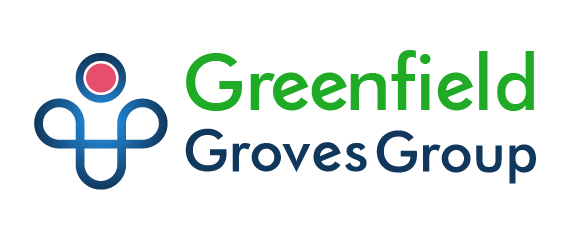Vertical supply chains first came about in the 19th century. Coined by Andrew Carnegie, vertical integration was a term used to describe how he and his company, U.S. Steel, had taken control of all of the aspects of the supply chain that they relied on.
This strategy—where a company takes control or ownership of two or more stages of production—is now more popular than ever. Vertical integration allows a company to control all aspects of supply, production, distribution, and retail—making it a promising solution for companies like Netflix, Amazon, and Uber.
While there are certainly risks to vertical integration and a fully vertical supply chain, it also allows a company to benefit from supply chain synergies, while achieving more profits and competitive advantage. An integrated supply chain also means an alignment of strategic processes and decisions.
Simply put, a vertical supply chain puts more control in the hands of the company to make decisions regarding inputs and outputs—processes that benefit both the company and the end consumers in a variety of ways.
Vertical Supply Chain Variations
Vertical alignment simply means that a company is effectively using resources to meet their strategic goals and activities. Essentially, vertical alignment brings together several elements to formulate the “how” behind the achievement of a company’s goals.
In some cases, this will directly incorporate elements of the supply chain into the company’s mission, values, and vision — and will likely bring about vertical integration.
When we consider each supplier, manufacturer, or distributor, we have to realize that they’re all operating with different priorities. Their pricing, bargaining power, and business practices will all play a role in how a company meets its business goals — and in what ways it may fall short.
With that in mind, vertical integration in the supply chain serves as a tool whereby a company can mitigate or entirely remove competing interests from their supply chain partners, and further contribute to the fulfillment of their goals and objectives.
This may play out in several different vertical supply chain variations, all based on the ordering of the supply chain:
- Forward (downstream) vertical integration: When a company at the beginning of the supply chain takes control of later stages of the supply chain (i.e. skips the middleman), it can be considered a forward integration. An example of this could be a farmer who, instead of selling their produce to a distributor, sells directly to customers at a farmer’s market.
- Backward (upstream) vertical integration: Backward integration is perhaps a more common occurrence in today’s economy. This occurs when a company towards the end of the supply chain amasses control of earlier stages of the supply chain. Every time you see a Target delivery truck or store-brand milk at the grocery store, you’re seeing the products of backward vertical integration.
- Balanced (upstream and downstream) vertical integration: This end-to-end strategy is not as common and makes use of both variations of vertical integration to incorporate several different aspects of the supply chain. What does this look like? An example of this could be a coffee manufacturer who takes control of both a coffee plantation and a cafe in which to sell its products.
With this in mind, it may be easier to realize the ubiquitous nature of vertical integration found in many of the products and services that we love today. From food and beverages to clothing and healthcare, we’re exposed to vertical integration on a nearly daily basis.
What Does This Mean to the End Consumer?
In a trend that’s exploded in recent years, more and more consumers are interested in lattes. No, we’re not referring to the milky coffee drink — we’re talking about the L.A.T.T.E. values: local, authentic, traceable, transparent, and ethical.
A vertical supply chain could be considered one of the few keys we have available to unlock these values.
When a brand is able to control more of its supply chain (i.e. farming, ingredients, manufacturing, packaging, etc.), they’ve taken advantage of one of the only ways true traceability and transparency can be ensured for the end consumer — and, in turn, the consumer can feel satisfied that the products they know and love are those that align with their environmental and social values.
What Does This Mean to the Company?
Not only does a vertical supply chain offer transparent and seamless coordination between different aspects of the supply chain, but it also allows the company to control more aspects of these value-adding stages.
A vertically integrated company may benefit from cost efficiencies. With less variables in the supply chain, it will only continue to get more efficient over time. This, along with a reduction in transaction costs means that a company can benefit from cost savings that can be applied to future initiatives.
The benefits for both the company and the end consumer can be further supported with a blockchain ledger that provides an additional glimpse into the workings of the supply chain—from the dirt through distribution. This gives the company a unique look into production, transportation, manufacturing, and packaging, which can allow them to pinpoint areas in which even more cost savings can be captured.
The use of a blockchain ledger also promises full transparency. Because the data is immutable and securely and decentrally stored, it also gives brand advocates and end consumers yet another reason to trust the company, products, and claims—which, especially in the case of sustainably and organically grown products, has become difficult because of fraud.
Why Do Full Sustainability and Complete Vertical Integration Matter to Greenfield Groves?
As a vertically aligned health and wellness firm, Greenfield Groves combines modern agribusiness practices with sustainable manufacturing techniques. Through this, Founder, Lindsay Giguiere is able to pursue her passion for building beautiful things that incorporate a healthy, balanced lifestyle — and do so in a way that’s backed by a fully-transparent and sustainable supply chain.
In fact, complete transparency and full sustainability are a few of the main reasons that Greenfield Groves invested in building its Greenfield Grows brand). This vertical integration allows the company to continue using progressive sustainability measures and a high quality, organic modern farm to find better answers for shaping our future.
Complete vertical integration matters to Lindsay and Greenfield Groves because it proves time and time again to be the best way to remain environmentally committed while using a forward-looking business model to reimagine health and wellness from the ground up.














